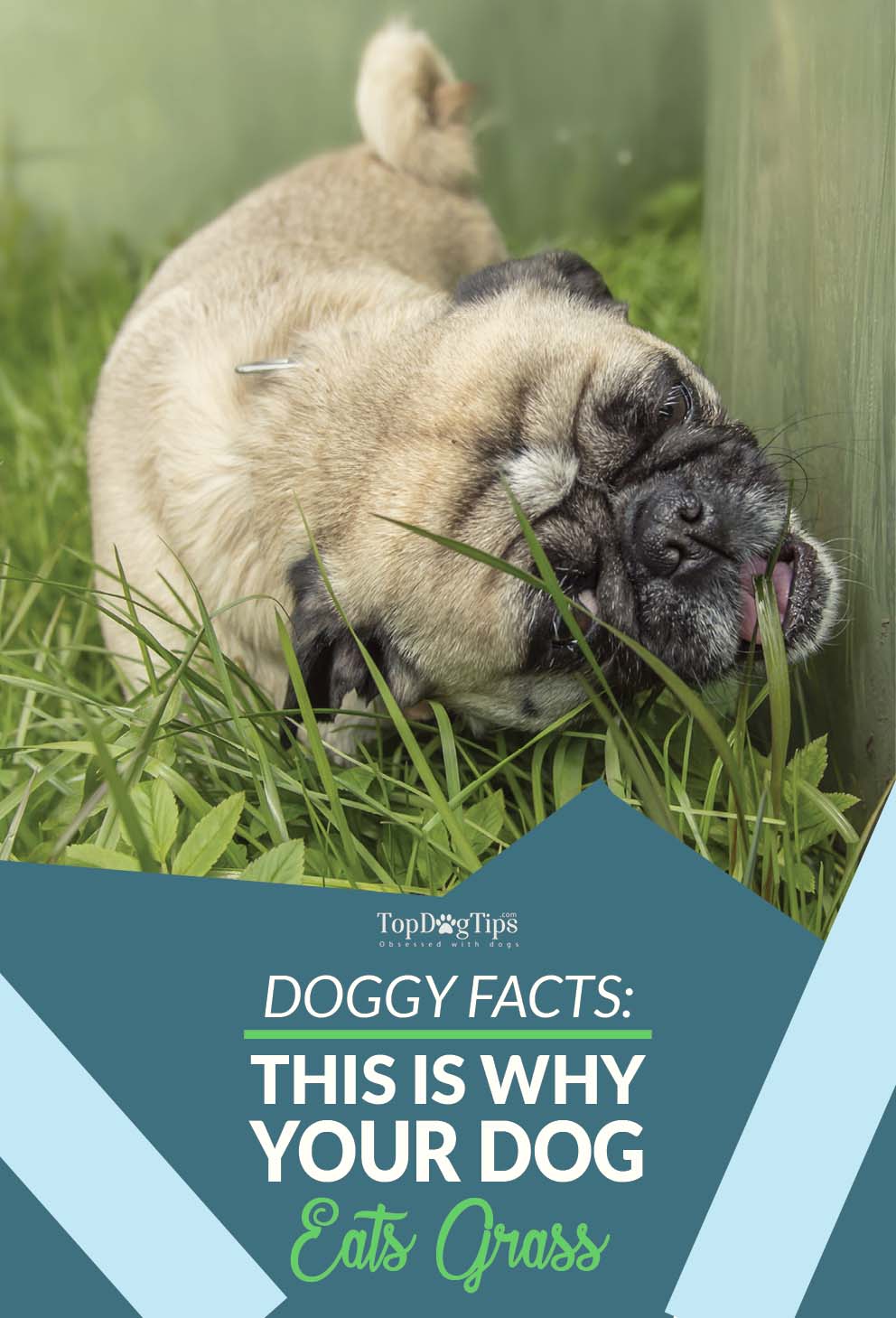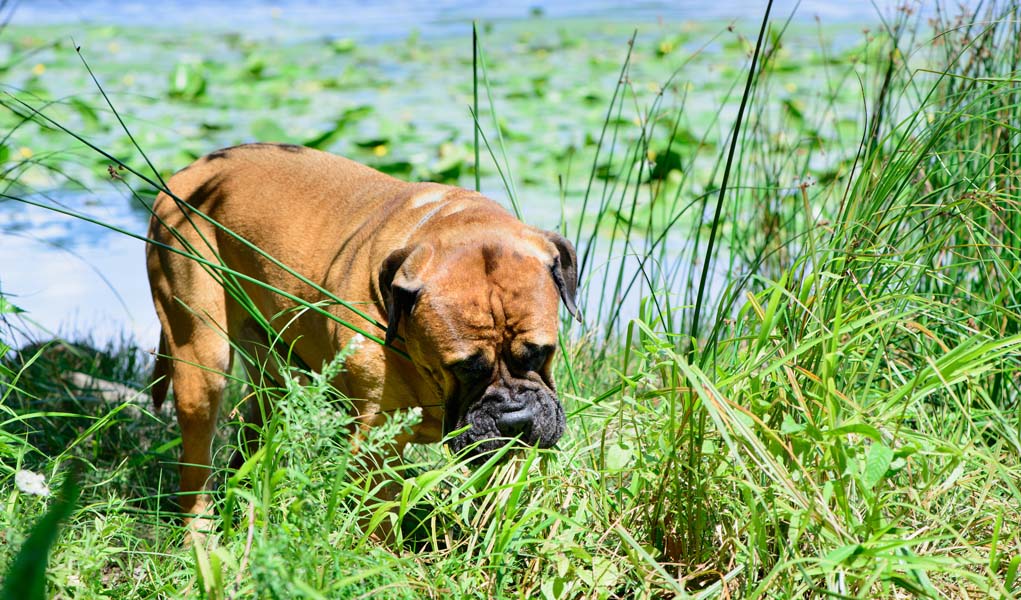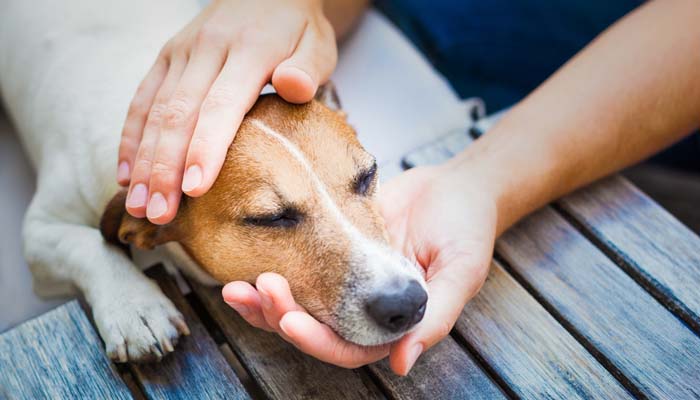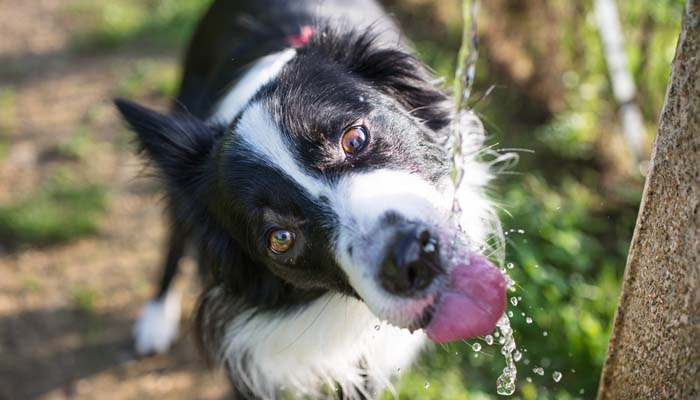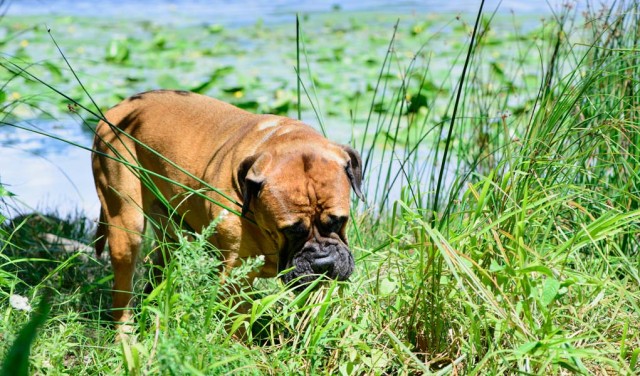
Table of Contents
All of our dogs love to eat grass, and many of us have asked ourselves more than once, “does my dog eat grass because he needs to, or like to?” This is arguably the most popular question in dog nutrition, if you can even call it that.
Dogs eat grass because sometimes they need to and sometime they like it. There isn’t one “scientifically proven” cause for grass eating in dogs.
Dogs may eat grass for one reason one day and then eat grass for another reason another day.
The bottom line, and most important thing to keep in mind, is that most dogs eat grass without suffering any ill effects.
It doesn’t seem to harm them at all. Oftentimes dog owners believe that their pet is eating grass because he doesn't feel well, but that is just a common misconception.
Dogs are meat eaters, as evidenced by their preference for meat and their pointy canine teeth, but they know they need to eat their vegetables, too.
This means they are actually “omnivores” or animals that are a combination of carnivore and herbivore. Wolves, coyotes and wild dogs get their vegetables, or eat grass, and meat by eating the stomach contents and muscles of herbivores.
READ ALSO: 13 Common “Why Does My Dog” Questions Answered
Does My Dog Eat Grass Because He Needs To or Likes To? There's a Simple Answer.
Domestic dogs may need to eat grass as part of their regular diet. Most dogs are given a balanced dog food, which should mean that the dog does not need to eat grass for nutritional reasons. This is not always the case, though.
Commercial dog foods are often made with vegetables and other ingredients that should fulfill a dog’s dietary needs but some dog foods do not accomplish this. Not necessarily because the food is nutrient-poor, though. Different dogs have different needs.
A dog may need more vegetables and less meat or he may not be able to digest commercial dog food properly, resulting in a deficiency even though the nutrient is contained in the food. For this reason, your dog may eat grass because he needs more vegetation or fiber.
RELATED: The Best Dog Food Brand
Upset Stomach Relief
There are many reasons why a dog may eat grass, aside from meeting his dietary needs. The common assumption that dog's eat grass to make themselves sick is true…sometimes. The texture of the grass in the dog’s throat and stomach seems to help a dog vomit up contents that are not digesting well.
Dogs do not eat grass for this reason very often, although most people jump to this conclusion every time their dog eats grass. Dogs vomit after eating grass only about a quarter of the time, according to a study done at the University of California in 2008. This is actually the least common reason for dogs to eat grass.
Even when your dog is eating grass because he needs to vomit, there is still no need for immediate concern, as long as the grass-eating dog only needs to eat grass on occasion. A dog that needs to eat grass to vomit too frequently, however, should see a veterinarian to determine if there is an underlying health problem.
When your dog needs to eat grass multiple times a day or even every day for several days, or if he brings up something that could have caused damage to his digestive tract or throat, call the veterinarian for advice. The problem could be anything from a slow adjustment to new food to internal parasites or even Inflammatory Bowel Disease (IBD).
READ THIS: Holistic Dog Care – The Ultimate Evidence-based Guide
Thirst for Water
Dogs that are very thirsty can be quite resourceful. If there is no water available for him to quench his thirst, the dog may eat grass. Healthy grass that is watered regularly has some moisture content. There may even be dew or droplets of water accumulated on the grass.
Cool blades of grass also feel refreshing in the dog’s mouth and may help him cool down on a hot day. Dogs cool themselves by opening their mouths and panting. The cool grass in the dog’s mouth may help him cool off or just feel good.
The Desire for Variety
 A dog might eat grass because he craves something different and he likes the different taste and texture of grass.
A dog might eat grass because he craves something different and he likes the different taste and texture of grass.
Most dogs eat the same food every day, which is usually recommended. Dogs can have a difficult time adjusting to the ingredients in new food.
It is best to find a food your dog likes that agrees with him and his digestive system and stick with it. The addition of a little extra vegetable matter a few days a week may resolve the issue.
Leafy vegetables, parsley, broccoli and carrots can be given to dog.
Dogs often prefer them cooked but you could try giving them to him raw. Your dog may like the texture and taste of raw broccoli and parsley. Some dogs enjoy chewing up and eating raw carrots.
READ THIS: 11 Best Superfoods for Dogs That May Improve Their Health
Beware of Toxins
Be very cautious about where your dog eats grass. Do not allow him to eat grass in a stranger’s yard, park or empty lot in the neighborhood. It is entirely possible the grass has been sprayed or treated with an herbicide or pesticide that will make him sick.
Even if you believe the grass has not been treated recently, do not let him eat it.
Herbicides can have harmful effects on a dog’s health that may not show up for years. Whether your dog wants to eat grass or needs to eat grass, only let him eat the grass from your yard when it has not been treated with herbicides or pesticides.
Do not let your dog eat plants other than grass unless you know for sure that the plant is not toxic to dogs. Many houseplants and garden plants are highly toxic to pets. You need to be very careful when gardening or planting flower beds. Make sure the plants that you choose are not toxic to your animals.
RELATED: Pit Bull Muscle Gaining 101 – How to Bulk Up a Pit Bull Healthfully
Grow Your Own Dog Grass
If you want to make sure your dog is healthy and only eating safe grass, grow some indoors and let your dog eat grass whenever the mood strikes. Growing the grass indoors is safer for a dog who likes to munch on it. Indoor grass kits are commonly sold for cats, but the same kits can be used to grow grass for dogs.
The type of grass in most of these kits is wheatgrass. It is not wheat that is grown for wheat grain. It is a fine-textured grass that was originally grown in pastures in Asia for grazing animals. You do not have to buy the kit if you don’t want to.
Wheatgrass seeds can be purchased separately. Wheatgrass for a dog can be grown in pots or flats. The flats will keep the grass lower to the ground, which is a more natural position for dogs to eat. Spread a few inches of potting soil in a flat or fill a pot to about 1 inch from the top. Sow the wheatgrass seeds and keep the potting soil moist.
For best results, set the flat or pot on the floor where it gets at least four to six hours of direct sunlight each day. This type of grass can also be grown outdoors in a sunny corner of the yard so the dog can eat safe grass when he goes outside.
READ NEXT: Dog Nutrition 101 – What Do Dogs Eat


